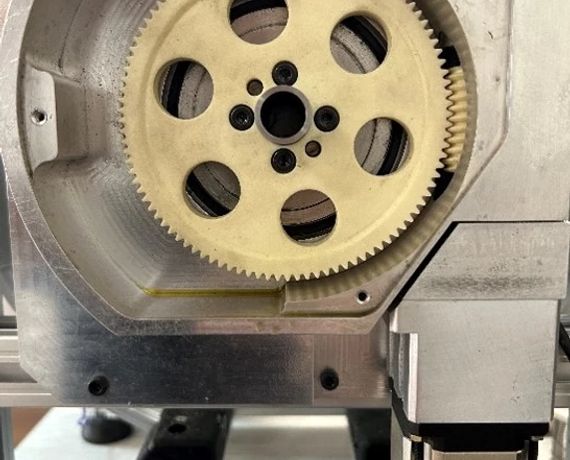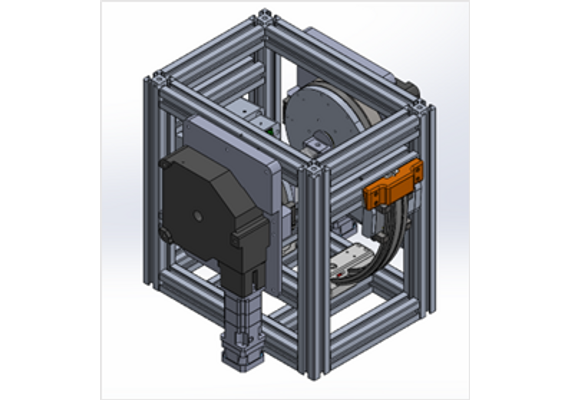Faster blood tests possible thanks to gears printed in 3D
Life-saving technology - a motorised system for predicting heart attacks
Realised by the 3D printing service from igus
The most common cause of death in the world is cardiovascular disease. If an impending heart attack is suspected, measuring the troponin level in the blood as quickly as possible could save the patient's life. While blood can be tested for troponin in a lab in a matter of hours, the metre developed by Cor.Sync can provide a result with the same accuracy in around eight minutes. To ensure the measurement's high accuracy, the rotor of a stepper motor system installed in the device had to be able to move with an angular offset of less than 0.1 degrees, which was primarily made possible by the low inertia of the 3D-printed gears from igus.- What was needed: lightweight gears to increase the resolution of a stepper motor system
- Manufacturing method: selective laser sintering (SLS)
- Requirements: lightweight, wear-resistant, maintenance-free and lubrication-free
- Material: iglidur® i3-PL
- Industry: medical equipment
- Success through collaboration: overcoming the technical barriers to realising the patented technology, increased predictability of heart attacks
Configure wear-resistant gears for free

Problem
To record the troponin concentration in the blood accurately, a 0.9-degree stepper motor was coupled to two gearboxes in series, both of which have a transmission ratio of 100:1. What still was in the way of the resulting resolution of 0.00009 degrees was the increased inertia of the system due to metal gears. A lighter material was needed to allow the stepper motor's torque to overcome the system's inertia. In addition, a hospital environment requires special operating conditions. Switching off the device for maintenance could cost some patients their lives. This means that, among other things, the gears have to run without lubrication. Furthermore, lubricants could pose a biological hazard in blood tests.Solution
3D printing of the gears made of the wear-resistant iglidur i3 plastic met every requirement. As for the gearboxes, Cor.Sync initially tested several metal models. After finding some that exhibited satisfactory movement when freshly lubricated, the design was adapted for printing. Thanks to the 3D printing service from igus, the desired design could be realised with minimal inertia. Apart from that, the self-lubricating polymer gears guaranteed freedom from system maintenance.More about the 3D printing service
The technology in detail
In essence, a blood test is based on what is known as SPR spectroscopy. A troponin concentration in the critical range of 1 to 100ng/L indicates an increased risk of a heart attack. In the technology used by Cor.Sync, a stepper motor should be able to generate an angle fluctuation of approx. 0.009 degrees at a troponin concentration of 1ng/L. Therefore, the available 0.9-degree stepper motor was coupled with two gearboxes in series. Each gearbox has a 100:1 transmission ratio, allowing for 0.00009 degrees of offset angles. However, metal gears are not suitable for such an application because they are too heavy in relation to the torque achieved by the stepper motor. The high-performance polymers from igus are characterised above all by their low weight and wear resistance.
Freedom from lubrication with all igus products
It is not advisable to use lubricants in hospital environments as they can become a favourable environment for the spread of infectious agents. For this reason, not only the self-lubricating iglidur i3 gears were used, but also other lubrication-free igus components in different parts of the device. The optical system, for example, consists of laser diodes and photodiodes, which have to be aligned with one another. For this purpose, the optical elements were attached to the drylin® W carriages for curved rail , which slide over the drylin® W double rail, thus ensuring the concentricity and alignment of the optical system.
To the drylin profile rail guides

Further application examples with components printed in 3D
All customer applications at a glance